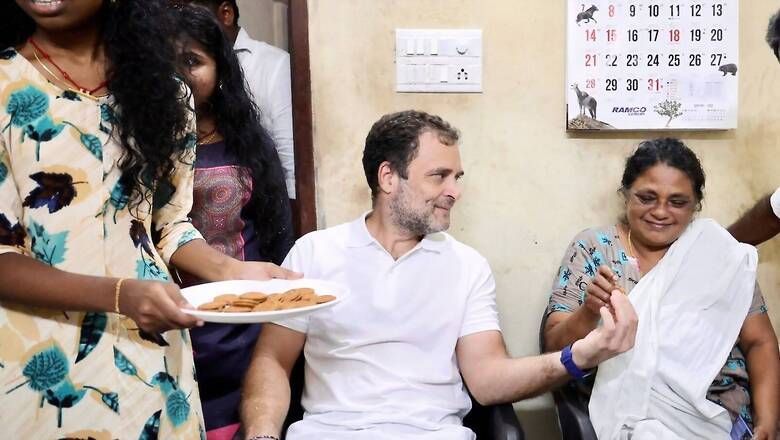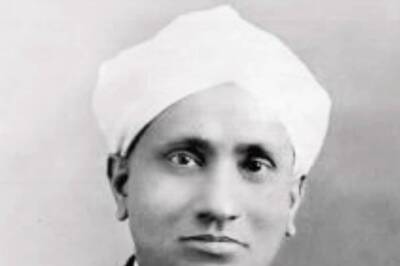
views
‘Generational shift’ has been a recurrent theme in the Congress for the last 15 years, but it is conspicuously absent from the discourse around the party’s presidential polls next month. The leading contenders — a doughty veteran and a flamboyant intellectual — are 71 and 66 respectively. The other names doing the rounds are even older: Mallikarjun Kharge (80), Kamal Nath (75) and Digvijaya Singh (75).
Three-term chief minister Ashok Gehlot, a member of the Old Guard, is the odds-on favourite while the charismatic (albeit controversial) three-term MP Shashi Tharoor, a member of the ‘dissident’ G-23, is the underdog. His candidature may not pose a serious challenge, but will lend a flavour of election rather than selection to the process.
The question is, where are the GenNext leaders? Rahul Gandhi, the perpetually reluctant prince, has turned a deaf ear to pleas by 11 state units to take over as party president once again. And the quinquagenarians he has nurtured and promoted, such as KC Venugopal, Randeep Surjewala, Jitendra Singh and Ajay Maken, are clearly no match for a Gehlot, Tharoor or Kharge.
For all their proven leadership skills, Sachin Pilot (45) and Chhattisgarh CM Bhupesh Baghel (61) are overshadowed by Gehlot. Lok Sabha MP and G-23 member Manish Tewari (56) may throw his hat into the ring, but to no real purpose if Tharoor contests.
The Congress does have up-and-coming youngsters like Lok Sabha MP Manickam Tagore (47), former CPI member Kanhaiya Kumar and MLA Jignesh Mevani (yet to formally join the party) but they have a very long way to go. Some of the state units have younger faces at the helm but again, they are yet to prove themselves.
The generational change trope has led to several members of the Old Guard being marginalised or quitting, notably Captain Amarinder Singh, Kapil Sibal and Ghulam Nabi Azad, but no young leaders of stature have emerged in their place. Pilot is an exception.
In fact, some of the most promising young faces have deserted the party in recent years, among them Jyotiraditya Scindia, Jitin Prasada, Sushmita Dev, Ashok Tanwar and RPN Singh. Among the younger members of G-23 who have not are Milind Deora (45) and Sandeep Dikshit (58). Mukul Wasnik, evergreen at 62, seems to be back in favour.
Many of those who have left cite their frustration with the inaccessibility of the leadership, the culture of sycophancy and the absence of a consultative process. Erstwhile spokesperson Jaiveer Shergill is a case in point. In March this year, he was quoted as saying it was vital that the “political future of Indian National Congress shines for the future of this country”. Five months later, the 38-year-old quit the party, presumably seeing no future for himself in it.
After the Congress was routed in the Assembly elections, discussions turned yet again to nurturing young talent so as to mobilise youthful voters. The GenNext brigade, now much older than it was when the debate began, articulated the same concern: when will the Old Guard vacate the electoral space for young leaders?
Replacing the veterans is a tricky exercise. The average age of Congress MPs has certainly declined from 60-plus in 2014 to 55-plus in 2019, but the old-timers still enjoy greater winnability. The experiment of fielding more than 50 per cent new faces in the Kerala Assembly elections last year failed, with the party failing to unseat the Left Front.
The over-dependence on the Old Guard argues a failure to build up new leaders. Unlike the BJP, the Congress cannot tap into an ever-present wellspring of talent. Back in the early 2010s, Rahul Gandhi attempted to institutionalise a mechanism to promote grassroots leaders up the ranks, but rapidly lost interest when problems cropped up.
After he became vice-president in 2013, he asserted the need for dynamic young representatives. The 2014 elections were a rude shock; if the veterans had been denied tickets, the Congress would have had very little representation in the Lok Sabha.
Rahul Gandhi tried to bypass the old power structure by creating his own coterie comprising Madhusudan Mistry, Mohan Prakash, CP Joshi, BK Hariprasad and others, besides a core team comprising non-political individuals drawn from various fields. But after the electoral debacle, the tried and trusted Old Guard was back, serving as trouble-shooters, money-managers, communicators and election managers.
He remained uncomfortable with them, however, and by 2020, it was clear that only selected members of the Old Guard would thrive, specifically the family loyalists. Those who put their own ambitions first without a mass base to back them up would be consigned to the doghouse.
Gehlot is a family loyalist, albeit not always pliable. He has twice check-mated Sachin Pilot and has proved wily enough to counter the BJP’s machinations in his state. As Congress president, he would have to give up the CM’s post. He would prefer to install a placeholder, rather than yield the post to Pilot.
Rahul Gandhi’s desire to reshape the Congress is commendable, but corporate-style talent-spotting and grooming have not yielded results. Nurturing and promoting grassroots workers and being responsive to their needs is the way forward. For the moment, it is the veterans who have the political skills and savvy to take on the BJP.
Read all the Latest Opinion News and Breaking News here




















Comments
0 comment